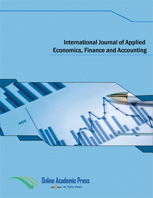The Effects of Currency Protectionism on the Exports of the Trade Partners - A Composite Index
DOI:
https://doi.org/10.33094/8.2017.2021.111.23.34Keywords:
Exports, Composite index, Exchange rate.Abstract
The competitive exchange rate devaluation (or currency protectionism) is a phenomenon of global political economy, which goes hand in hand with trade activities. The causes, consequences and effects of monetary protectionism for the concerned countries have been thoroughly analyzed on the basis of existing literature. An important element of analysis is the different effects of the implementation of protectionist policy measures on trading partners. An example of currency protectionism nowadays is the currency competition between the US and China. Although the US is the "hegemon" of the modern international economic-political system, China's continuous, upward and rapid economic course has weakened the primacy of the US, with consequences that are perceived in the global economic system. Of course, China has been accused of practices of economic "mercantilism." On the basis of these mercantilist accusations, a kind of war broke out with the US. But the main question is this: how are the exports of trading partners affected by this currency competition? To be able to answer this question more fully, a quantitative tool should be created that can interpret the effects of currency competition on trading partners. This study will try answering this question by using the case study of U.S. - China currency competition. The methodology applied is the creation of a Composite Index.




